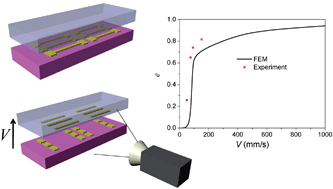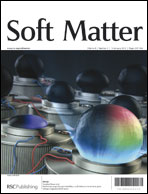Rate-dependent interaction between thin films and interfaces during micro/nanoscale transfer printing†
Abstract
This paper describes the mechanism of the rate-dependent adhesion for a transfer printing system. A cohesive element model accounting for the viscoelastic effect of the stamp reveals the evolution of the stress and the stress distributions as the peeling velocity increases. Experiments using Si ribbons separating from a wafer verify this prediction and demonstrate the influence of the rate-dependent effect on the transfer efficiency. The simulations show the relaxation time of the stamp has little effect on the transfer efficiency, and implies that it can be improved by adjusting the viscoelastic modulus.


 Please wait while we load your content...
Please wait while we load your content...